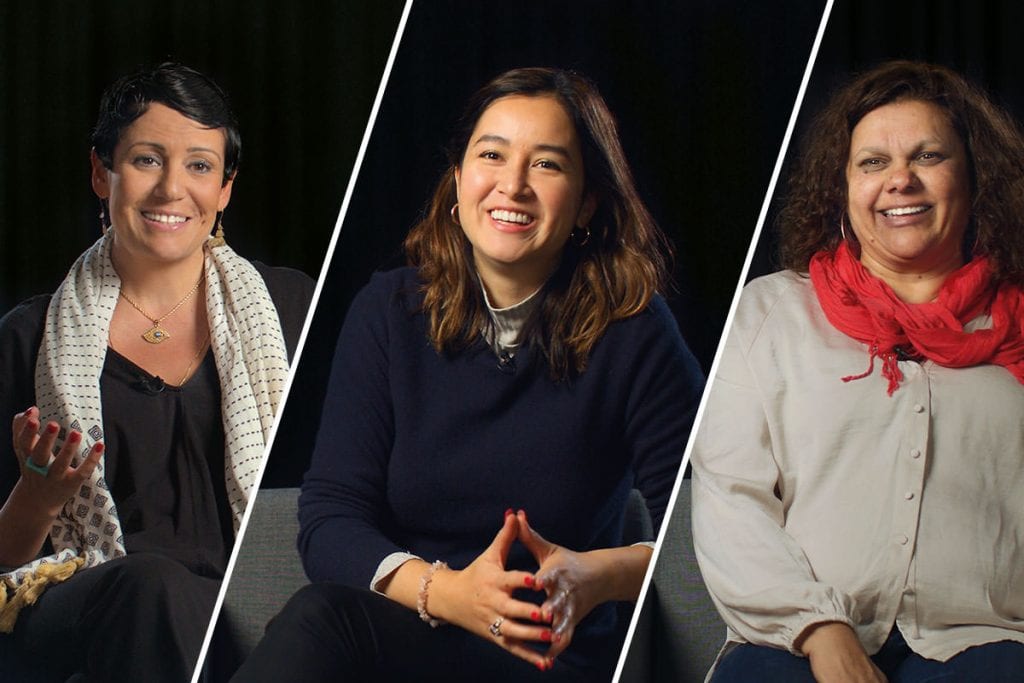Four years ago, Screen Australia, a Federal Government agency that supports Australian screen development, production and promotion – set the goal of getting, at minimum, 50% of projects with women in key creative roles.
‘Key creative roles’ include the writer, director, producer, or where the central character is a female. The Gender Matters KPI is a measure of collaboration, indicating how many projects that received Screen Australia production funding had women in at least half of the key creative roles as an average between 2016 and 2019.
Joanna Werner, Screen Australia Board member and chairwoman of the Gender Matters Taskforce, said they wanted to “better utilise the talents of Australia’s female screen creatives and encourage collaboration.”
“There is a substantial slate of female-directed Australian films due for release including Angel of Mine, Ride Like a Girl, The Nightingale, Babyteeth, Judy and Punch, Animals, and Relic, so it’s essential we vote with our wallets and go to see these films in the cinema to support this wave of talent,” she said in a statement.
“This is by no means the finish line to achieving gender parity, particularly in writer and director roles, but today we celebrate that systemic change in our sector is well underway.”
Categories within the study were segregated by format, which included Documentary, Online Drama, TV Drama and Feature Drama. The largest spike in percentage of projects with at least 50% of women on teams was Online Drama, which went from 55% of projects in 2017/18 to 81% in 2018/19.
Screen Australia Head of Development, Nerida Moore believes that the initiative has “fundamentally changed the way we make funding decisions at Screen Australia. It put consideration of what stories are being told and who is telling them at the centre of our decision making. It’s made a profound impact on our staff, and has primed us to be able to champion inclusivity more broadly.”
“The $5 million in targeted funding provided through Gender Matters was an important investment that has helped the industry take a huge step forward in addressing gender imbalance.”
Screenwriter Elise McCredie said, “In the past couple of years I believe there’s been much greater awareness of gender equity in both crewing and the composition of writers’ rooms.”
Melbourne-based screenwriter Niki Aken agrees: “Five to eight years ago, if you were to speak out about something maybe not being as good as it could be, like, saying it would help to get a female writer onto this project, it was a lot easier for people to say, oh, they’ll never get approved. Now, thanks to the work of Screen Australia, people are starting to listen to these voices and opinions.”
Aken, who has written for Anzac Girls, Janet King, Underbelly, and most recently, The Hunting, is also a founder member of Australian Writers’ Guild’s Diversity and Inclusion Action Committee, which is a six-member body that assists in promoting and improving diversity and inclusion in the industry.
Statistics – the good and the bad
Three years ago, just 10% of directors attached to a Feature Film were women. Today, it’s 27%. The percentage of female writers on Feature Films also rests at 27%.
In the last three years, the number of female protagonists in Dramas has risen from 40% to 58%. Aside from television and documentary producing, updated industry wide data from Screen Australia reveals women still make up less 50% of the writers, directors and producers overall. The percentage of females in Director roles remains low; in Drama, it’s 17%.
Setting New Goals
Screen Australia has set a new Gender Matters target – to have 50% of the key creatives across all projects that receive Screen Australia development and production funding to be women, across a three-year-average. Whereas the previous KPI was collaboration-focused and centralised on individual creative teams, the new KPI will take a headcount approach of getting at least 50% women across the board. It will also include Development Funding, which are pre-production, pre-writing activities.
Joanna Werner said, “The new KPI we are focussing on the volume of female key creatives working overall. By rolling development funding into the new KPI, we are seeking to ensure gender representation is being considered right from the early stages of a project.” Nerida Moore added, “Our challenge is making sure that women are sharing equitably in the $65 million of funding Screen Australia’s Content Unit disperse each year.”
The Gender Matters Task Force, a series of initiatives that address the gender imbalance within the Australian screen industry, has been an critical advisory body for Screen Australia. Screen Australia wants to watch how many female writers are making ground, that their numbers are increasing over time. Australia’s screen industry – across film and television, is a $3 billion industry.
“Our government is more interventionist and supportive of local stories than a lot of other countries,” said Scott Dawkins, Senior Manager of Communications at Screen Australia.


